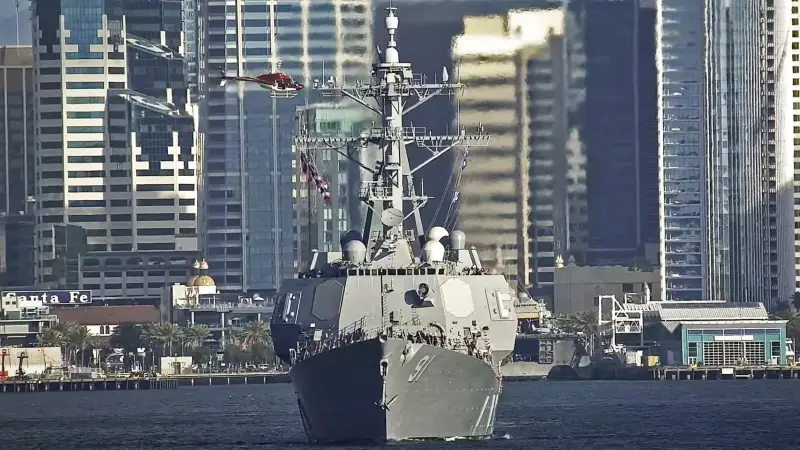RTR/EW destroyers for the US Navy

Four destroyers will become test ships for the Navy. The total cost of the program is $17 billion to modernize Block II A destroyers in the field of electronic warfare, according to destroyer modernization program manager Capt. 1st Rank Tim Moore.
Late last year, the destroyer USS Pinckney (DDG-91) completed the first part of a two-phase modernization program and left the General Dynamics NASSCO shipyard in San Diego, California. Some sailors compared the ship's new look to Carrie Fisher's (Princess Leia) double hairdo in Star Wars.
The sponsons, two decks high, were added to Pinckney's superstructure during a $121 million renovation that also included upgrades to the ship's systems, hull and propulsion plant. Additionally, a new Northrop Grumman-built Block III system, an improved version of the AN/SLQ-32(V)7 or SEWIP Block III electronic warfare system, is installed.
This destroyer is the first of four ships that will receive radical changes to the bow superstructure. Next in line are the James E. Williams (DDG-95), in Norfolk, Virginia, and the San Diego-based carriers Chung Hong (DDG-93) and Halsey (DDG-97).
The first phase includes the modernization of the HM&E combat system and the installation of SEWIP Block III. If the trial operation is successful, it is planned to modernize 16 more ships, but there are still certain questions with this.
As Tim Moore stated:
The second phase of the upgrade will be to equip these ships with a new version of the AN/SPY-6 air and missile defense radar, manufactured by Raytheon, which will replace the current aging AN/SPY-1D(v) radar.
The SPY-6 version planned for the Pinckney is a smaller version of the radars developed for Arleigh Burkes Flight III, Raytheon's Mike Mills told USNI News.
Raytheon has already begun work on creating the two-by-two-foot modules that make up the AESA, which is expected to be installed sometime in 2027, Mills said.
The SPY-6(v)4 AFAR will include 24 modules, which is less than the 37 Raytheon AFAR modules that make up the Flight III version. The radar will be able to leverage the existing capacity of Block IIA destroyers, Moore said. Flight III's power needs prompted the Navy to undertake major upgrades to the propulsion system and electrical grid aboard the latest version of the Arleigh Burkes.
The four-ship modernization builds on the existing DDG modernization program, which covers all versions of the Arleigh Burkes, with the Baseline 9 combat system and more powerful computers that will allow the destroyers to intercept both ballistic missiles, traditional cruise missiles and aviation threats.
The DDG Mod 2.0 program was originally planned to be extended to 20 ships, USNI News reported last year. Now Captain 1st Rank Moore did not specify how many ships will be involved in the program, but confirmed that its estimated cost is $17 billion. He said the Navy is "still refining" the total cost.
On my own behalf, I can add that the destroyer looks somewhat comical (photo attached). One can only guess how seriously this will affect the “top” weight, stability, and, accordingly, the seaworthiness of ships.
Information